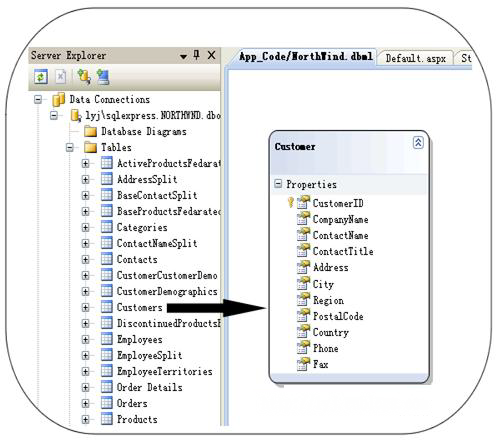最近的Silverlight开发中,由于部分需求对实时性和数据量下载速度有要求,部分WCF服务配置成了netTcpBinding,这种方式跟普通的service.svc寄宿IIS不同的是,Silverlight需要的策略文件需要放置在本机IIS的根下,也就是wwwroot文件夹下,以满足Silverlight在以TCP协议调用本机WCF服务时请求策略文件。
(注:Silverlight通过TCP协议调用WCF服务时,会以http方式请求主机的一个策略文件,地址是http://localhost/clientaccesspolicy.xml)
这其实是个不太好的选择,程序运行的所需的环境被分成了两部分,同事的机器上并未安装IIS,为了大家开发简便,不用在额外安装IIS,也为了让程序更加独立,我就想能不能写代码监控80端口模拟IIS向Silverlight输出这个策略文件。
解决方法
有了这个想法之后,首先想到的是通过Socket进行监听,因为此前在MSDN上看到过这种方式,但很无奈,将代码转移过来之后,并未成功。相信做过Silverlight在Socket方面应用的朋友对下面这个PolicyServer类很熟悉吧。
using System;
using System.IO;
using System.Net;
using System.Net.Sockets;
namespace PolicyServer
{
// Encapsulate and manage state for a single connection from a client
class PolicyConnection
{
private Socket m_connection;
// buffer to receive the request from the client
private byte[] m_buffer;
private int m_received;
// the policy to return to the client
private byte[] m_policy;
// the request that we're expecting from the client
private static string s_policyRequestString = "<policy-file-request/>";
public PolicyConnection(Socket client, byte[] policy)
{
m_connection = client;
m_policy = policy;
m_buffer = new byte[s_policyRequestString.Length];
m_received = 0;
try
{
// receive the request from the client
m_connection.BeginReceive(m_buffer, 0, s_policyRequestString.Length, SocketFlags.None, new AsyncCallback(OnReceive), null);
}
catch (SocketException)
{
m_connection.Close();
}
}
// Called when we receive data from the client
private void OnReceive(IAsyncResult res)
{
try
{
m_received += m_connection.EndReceive(res);
// if we haven't gotten enough for a full request yet, receive again
if (m_received < s_policyRequestString.Length)
{
m_connection.BeginReceive(m_buffer, m_received, s_policyRequestString.Length - m_received, SocketFlags.None, new AsyncCallback(OnReceive), null);
return;
}
// make sure the request is valid
string request = System.Text.Encoding.UTF8.GetString(m_buffer, 0, m_received);
if (StringComparer.InvariantCultureIgnoreCase.Compare(request, s_policyRequestString) != 0)
{
m_connection.Close();
return;
}
// send the policy
m_connection.BeginSend(m_policy, 0, m_policy.Length, SocketFlags.None, new AsyncCallback(OnSend), null);
}
catch (SocketException)
{
m_connection.Close();
}
}
// called after sending the policy to the client; close the connection.
public void OnSend(IAsyncResult res)
{
try
{
m_connection.EndSend(res);
}
finally
{
m_connection.Close();
}
}
}
// Listens for connections on port 943 and dispatches requests to a PolicyConnection
class PolicyServer
{
private Socket m_listener;
private byte[] m_policy;
// pass in the path of an XML file containing the socket policy
public PolicyServer(string policyFile)
{
// Load the policy file
FileStream policyStream = new FileStream(policyFile, FileMode.Open);
m_policy = new byte[policyStream.Length];
policyStream.Read(m_policy, 0, m_policy.Length);
policyStream.Close();
m_listener = new Socket(AddressFamily.InterNetworkV6, SocketType.Stream, ProtocolType.Tcp);
m_listener.SetSocketOption(SocketOptionLevel.IPv6, (SocketOptionName)27, 0);
m_listener.Bind(new IPEndPoint(IPAddress.IPv6Any, 943));
m_listener.Listen(10);
m_listener.BeginAccept(new AsyncCallback(OnConnection), null);
}
public void OnConnection(IAsyncResult res)
{
Socket client = null;
try
{
client = m_listener.EndAccept(res);
}
catch (SocketException)
{
return;
}
// handle this policy request with a PolicyConnection
PolicyConnection pc = new PolicyConnection(client, m_policy);
// look for more connections
m_listener.BeginAccept(new AsyncCallback(OnConnection), null);
}
public void Close()
{
m_listener.Close();
}
}
public class Program
{
static void Main(string[] args)
{
if (args.Length == 0)
{
Console.WriteLine("usage: PolicyServer.exe PolicyFile.xml");
return;
}
PolicyServer ps = new PolicyServer(args[0]);
System.Threading.Thread.Sleep(System.Threading.Timeout.Infinite);
}
}
}
此路不通之后,又想起使用HttpListener类,看看是否能够监听http请求,果然能够截获HTTP的请求 HttpListener listener = new HttpListener(); listener.Prefixes.Add(http://localhost/); listener.Start();Console.WriteLine("开始监听…"); HttpListenerContext context = listener.GetContext(); HttpListenerRequest request = context.Request; HttpListenerResponse response = context.Response; 但是这种方式有个明显的缺点,就是线程是阻塞的。于是,又想到使用线程池。 System.Threading.ThreadPool.QueueUserWorkItem(new System.Threading.WaitCallback(Listen)); private static void Listen(object state) { while (httpListener.IsListening) { httpListener.BeginGetContext(new AsyncCallback(ListenerCallback), httpListener); listenForNextRequest.WaitOne(); } }
这样的话,每接收一个请求便会异步处理这个请求。在请求的处理上,接收请求后需要向外输出策略文件流,供silverlight端接收验证。
using(System.Net.HttpListenerResponse response = context.Response)
{ System.Threading.Thread.Sleep(1000); string responseString = "<?xml version=\"1.0\" encoding=\"utf-8\"?> " + " <access-policy> " + " <cross-domain-access> " + " <policy> " + " <allow-from http-request-headers=\"*\">" + " <domain uri=\"*\" /> " + " </allow-from> " + " <grant-to> " + " <socket-resource port=\"4502-4534\" protocol=\"tcp\" /> " + " </grant-to> " + " </policy> " + " </cross-domain-access>" + " </access-policy>"; byte[] buffer = System.Text.Encoding.UTF8.GetBytes(responseString); response.ContentLength64 = buffer.LongLength; response.OutputStream.Write(buffer, 0, buffer.Length); }
启动这个模拟服务,将clientaccesspolicy从wwwroot中移除后再运行一下程序,OK,我们不再需要将策略文件放到IIS下了。
注意:如果你的机器装了IIS,请还是放一个策略文件到wwwroot吧,否则就停掉IIS再使用这个类,因为IIS和这个类只能有一方监听80端口。


 喜欢
喜欢  顶
顶 难过
难过 囧
囧 围观
围观 无聊
无聊



